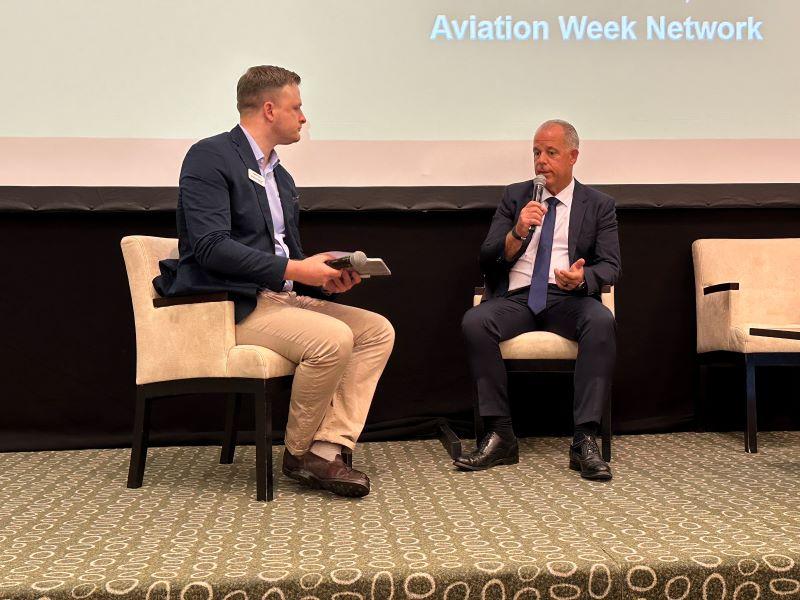
James Pozzi interviews airBaltic CEO Martin Gauss at MRO BEER 2024.
Credit: Lee Ann Shay / Aviation Week Network
VILNIUS, Lithuania—AirBaltic expects to have a second consecutive record revenue year in 2024 and plans to double its all-Airbus A220 fleet over the next five years despite ongoing durability issues with the aircraft’s Pratt & Whitney PW1500G engines, the carrier’s top executive says. To fuel its...
Subscription Required
AirBaltic CEO Discusses IPO, PW1500G Engine Problems is published in Aviation Daily, an Aviation Week Intelligence Network (AWIN) Market Briefing and is included with your AWIN membership.
Already a member of AWIN or subscribe to Aviation Daily through your company? Login with your existing email and password
Not a member? Learn how to access the market intelligence and data you need to stay abreast of what's happening in the air transport community.





